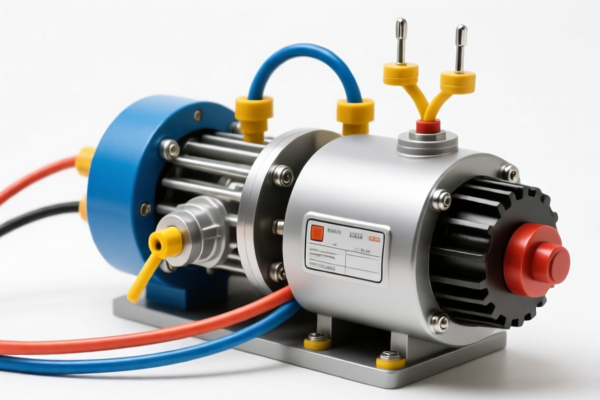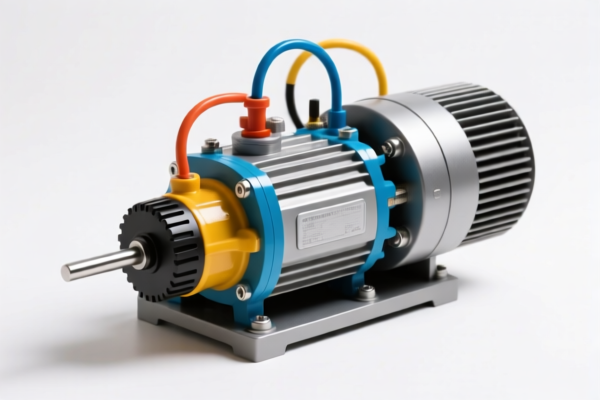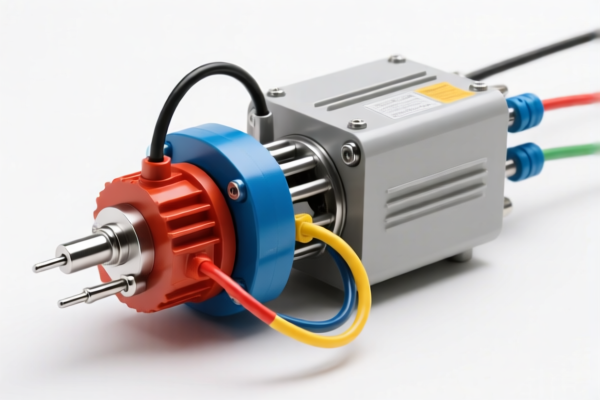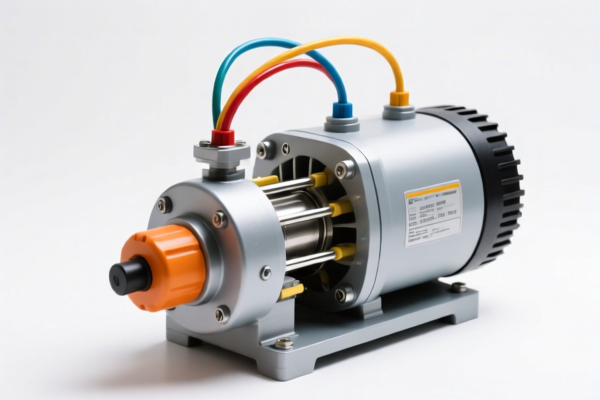| HS Code | Official Doc | Tariff Rate | Origin | Destination | Effective Date |
|---|---|---|---|---|---|
| 8501102000 | Doc | 61.7% | CN | US | 2025-05-12 |
| 8501402020 | Doc | 58.3% | CN | US | 2025-05-12 |
| 8543906500 | Doc | 55.0% | CN | US | 2025-05-12 |
| 8479891000 | Doc | 55.0% | CN | US | 2025-05-12 |




Electrical Machinery
Electrical machinery encompasses a broad range of devices that convert electrical energy into mechanical energy, or vice versa. These machines are fundamental to modern industry, power generation, and everyday life.
Core Principles
The operation of electrical machinery relies on the principles of electromagnetism, specifically the interaction between magnetic fields and electric currents. Key phenomena include:
- Electromagnetic Induction: The production of a voltage (and potential current) in a conductor due to a changing magnetic field.
- Lorentz Force: The force exerted on a charged particle moving through a magnetic field.
- Faraday's Law of Induction: Quantifies the relationship between a changing magnetic field and the induced voltage.
Types of Electrical Machinery
Electrical machinery can be broadly categorized into several types:
- Motors: Convert electrical energy into mechanical energy.
- DC Motors: Utilize direct current. Subtypes include:
- Brushed DC Motors: Employ brushes and a commutator to deliver current to the rotor windings. Simpler and less expensive, but require more maintenance due to brush wear.
- Brushless DC Motors (BLDC): Utilize electronic commutation, offering higher efficiency, longer lifespan, and reduced noise.
- Series Wound DC Motors: High starting torque, speed varies significantly with load.
- Shunt Wound DC Motors: Relatively constant speed, moderate starting torque.
- Compound Wound DC Motors: Combines characteristics of series and shunt wound motors.
- AC Motors: Utilize alternating current. Subtypes include:
- Induction Motors: Most widely used type. Robust, reliable, and relatively inexpensive. Subcategories include:
- Squirrel Cage Induction Motors: Simple rotor construction, high efficiency, and widely applicable.
- Wound Rotor Induction Motors: Allows for speed control through external resistance.
- Synchronous Motors: Operate at a speed directly proportional to the frequency of the AC supply. Used in applications requiring precise speed control.
- Universal Motors: Can operate on both AC and DC power. High speed and high starting torque, but relatively noisy.
- Induction Motors: Most widely used type. Robust, reliable, and relatively inexpensive. Subcategories include:
- Stepper Motors: Convert digital pulses into precise mechanical movements. Used in robotics, CNC machines, and printers.
- DC Motors: Utilize direct current. Subtypes include:
- Generators: Convert mechanical energy into electrical energy.
- DC Generators: Produce direct current.
- AC Generators (Alternators): Produce alternating current. Dominant type used in power plants.
- Transformers: Transfer electrical energy between circuits through electromagnetic induction, typically changing voltage levels.
- Relays: Electrically operated switches.
- Solenoids: Convert electrical energy into linear mechanical motion.
Materials Used
The construction of electrical machinery involves a variety of materials:
- Magnetic Materials: Silicon steel (for cores), permanent magnets (e.g., neodymium, ferrite), soft magnetic alloys.
- Conductors: Copper (most common), aluminum.
- Insulating Materials: Various polymers, ceramics, mica, varnishes.
- Structural Materials: Steel, aluminum, cast iron.
- Semiconductors: Used in control circuits and power electronics (e.g., silicon, gallium nitride).
Applications
Electrical machinery is ubiquitous:
- Industrial Automation: Motors drive pumps, fans, compressors, conveyors, and robotic systems.
- Power Generation: Generators produce electricity in power plants (hydroelectric, thermal, nuclear, wind).
- Transportation: Motors drive electric vehicles, trains, and ships.
- Household Appliances: Motors are used in washing machines, refrigerators, air conditioners, and power tools.
- Heating, Ventilation, and Air Conditioning (HVAC): Motors drive fans, pumps, and compressors.
- Medical Equipment: Motors are used in imaging devices, surgical tools, and life support systems.
Maintenance & Considerations
- Bearings: Regular lubrication and inspection are crucial for motor longevity.
- Winding Insulation: Insulation breakdown is a common failure mode, especially in high-temperature applications.
- Cooling: Many machines require cooling systems (fans, liquid cooling) to prevent overheating.
- Vibration: Excessive vibration can indicate mechanical problems.
- Efficiency: Selecting energy-efficient machines can significantly reduce operating costs.
- Power Quality: Harmonic distortion and voltage fluctuations can affect machine performance.
Electrical machinery encompasses a broad range of devices utilizing electricity to perform various functions. Based on the provided information, several HS codes may be relevant depending on the specific type of electrical machinery.
Here are the qualifying HS codes:
- 8501102000: This HS code covers Electric motors and generators (excluding generating sets): Motors of an output not exceeding 37.5 W: Of under 18.65 W: Synchronous.
- 85: Chapter 85 pertains to Electrical machinery and equipment.
- 01: Heading 01 specifically covers Electric motors and generators (excluding generating sets).
- 10: Subheading 10 narrows the scope to motors of an output not exceeding 37.5 W.
- 20: Further specifies motors of an output under 18.65 W and synchronous type. The tariff rate is a base duty of 6.7%, a surcharge of 25.0%, and 30.0% post April 2, 2025, resulting in a total tariff of 61.7%.
- 8501402020: This HS code covers Electric motors and generators (excluding generating sets): Other AC motors, single-phase: Of an output exceeding 37.5 W but not exceeding 74.6 W: Gear motors.
- 85: Chapter 85 pertains to Electrical machinery and equipment.
- 01: Heading 01 specifically covers Electric motors and generators (excluding generating sets).
- 40: Subheading 40 narrows the scope to other AC motors, single-phase.
- 20: Further specifies motors with an output exceeding 37.5 W but not exceeding 74.6 W, specifically gear motors. The tariff rate is a base duty of 3.3%, a surcharge of 25.0%, and 30.0% post April 2, 2025, resulting in a total tariff of 58.3%.
- 8543906500: This HS code covers Electrical machines and apparatus, having individual functions, not specified or included elsewhere in this chapter; parts thereof: Parts: Other: Printed circuit assemblies: Of flat panel displays other than for articles of heading 8528, except for subheadings 8528.52 or 8528.62.
- 85: Chapter 85 pertains to Electrical machinery and equipment.
- 43: Heading 43 covers Electrical machines and apparatus, having individual functions, not specified or included elsewhere in this chapter; parts thereof.
- 90: Subheading 90 narrows the scope to parts.
- 65: Further specifies other printed circuit assemblies for flat panel displays (excluding specific articles under heading 8528, subheadings 8528.52 or 8528.62). The tariff rate is a base duty of 0.0%, a surcharge of 25.0%, and 30.0% post April 2, 2025, resulting in a total tariff of 55.0%.
- 8479891000: This HS code covers Machines and mechanical appliances having individual functions, not specified or included elsewhere in this chapter; parts thereof: Other machines and mechanical appliances: Other: Electromechanical appliances with self-contained electric motor: Air humidifiers or dehumidifiers.
- 84: Chapter 84 pertains to Nuclear reactors, boilers, machinery and mechanical appliances.
- 79: Heading 79 covers Machines and mechanical appliances having individual functions, not specified or included elsewhere in this chapter; parts thereof.
- 89: Subheading 89 narrows the scope to other machines and mechanical appliances.
- 10: Further specifies other electromechanical appliances with self-contained electric motor, specifically air humidifiers or dehumidifiers. The tariff rate is a base duty of 0.0%, a surcharge of 25.0%, and 30.0% post April 2, 2025, resulting in a total tariff of 55.0%.
Customer Reviews
No reviews yet.